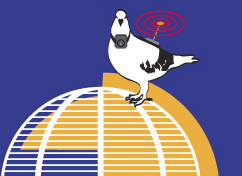Joline Blais
Visitor
|
Beyond the Commons 2: Indigenous Networks - 2006/05/16 12:40
Indigenous Networks
When Marshall McLuhan coined the term "Global Village", he invited us to consider how humans could think of their relationships--personal village-based relationships--on a global scale. Indigenous people who speak of Mother Earth, already do that, of course, but "civilized" people are still struggling to figure out how they are networked to global ecosystem that they are in the process of destroying.
To imagine ourselves as citizens of the earth, rather than of a nation, might be one step. Numerous net.art projects point in that direction, from Mark Napier's net.flag to Refugee Republic, to Natalie Bookchin's Agora Xchange. Internet news can also assume a village perspective as Madmundo, does when it tries to answer a 15 year-old girl's question about why she must die of AIDS in South Africa. The answer actually involves a global journey from her home town of Hamburg, South Africa to AIDS activism in Germany, to Thailand’s successful AIDS program, to Nelson Mandela who recently lost his son to AIDS, to the World Bank’s 6-nation videoconference on AIDS, to a G8 meeting in Scotland, and finally back to a local AIDS physician in Hamburg. MadMundo thus tackles a local question with a global, but specific response. This glocal story finally “makes sense” of the global networks that determine why a child in Africa must die.
Not surprisingly, this grounded story for a global village has parallels in indigenous cultures. In Australia’s Northwest Territory, the Warlpiri aborigines own and operate a sophisticated videoconferencing network. Both interactive and visual, this medium allows aboriginal leaders to effectively use their system of hand gestures, as well as facilitating extensive consultations essential to ceremonial decision-making.
The Tamani Network links four remote settlements with each other and with cities such as Sydney, Darwin and Alice Springs. While personal and ceremonial uses accounted for most of the 1,200 hours logged in by community members during the first year, the CU-SeeMe technology also connected the Warlpiri to a researcher in North Carolina, a Festival Hall in London, and to other indigenous communities around the world. They have conducted sessions on land rights and cultural preservation with the Scandinavian Saami, Alaskan Inupiat, and Canadian Inuit, and dance exchanges with the Canadian Little Cree. So far this glocal network has strengthened family and community cohesion, helping to overcome geographic isolation and cultural hegemony, as well as linking their issues to those of other indigenous peoples worldwide.
|
